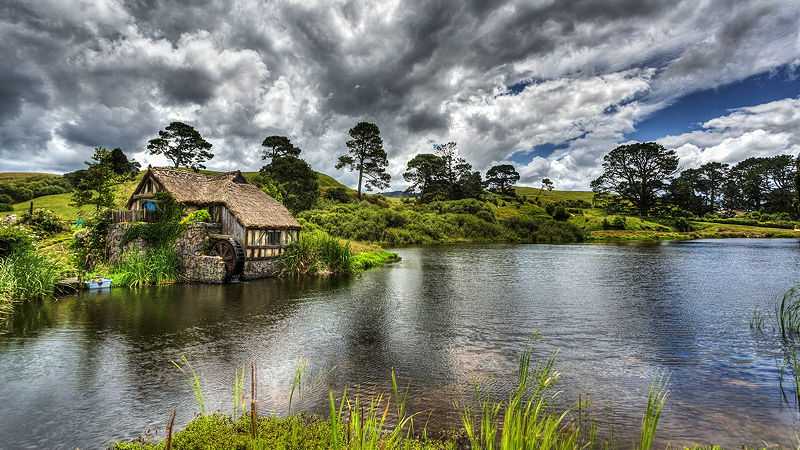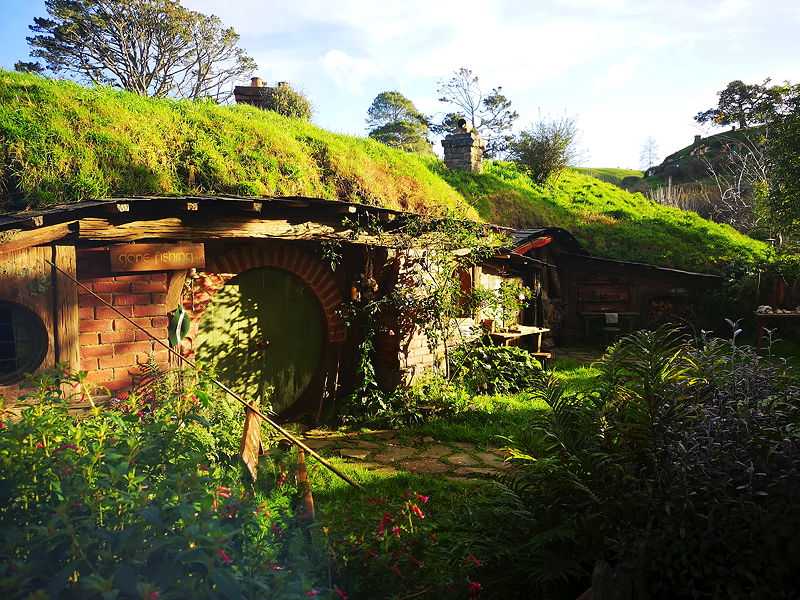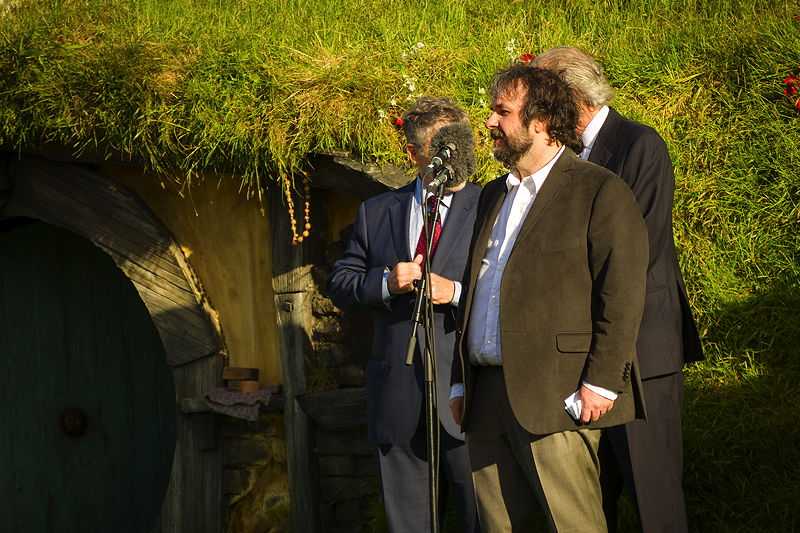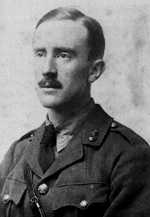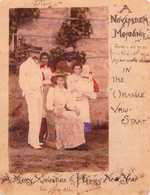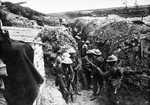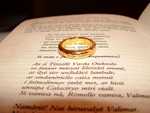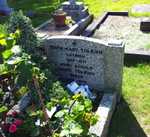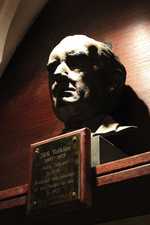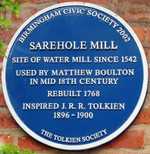1. Tolkien's early life
John Ronald Reuel Tolkien was born in Bloemfontein, South Africa, on January 3, 1892, to Arthur Tolkien and Mabel Suffield Tolkien.
Tolkien lost his father at age four. Soon afterwards, Tolkien’s mother decided to relocate the family, including his younger brother Hilary, to Sarehole, in Birmingham, England. When Mabel died in 1904, the Tolkien brothers were sent to live with a relative and in boarding homes, with the Catholic priest, Father Francis Morgan assuming guardianship in Birmingham.
Although a scholar at King Edward VI school, Tolkien initially failed to win a scholarship to Oxford. This was partly due to falling in love with his childhood sweetheart Edith Bratt.
On finding out about this romance, Tolkien’s guardian prohibited him from seeing Edith until he was 21 and no longer under his care. Tolkien reluctantly agreed to his request.
Tolkien earned a scholarship to Oxford University and enrolled in 1911, studying English language and literature. Tolkien faithfully waited until his 21st birthday in 1913 when he renewed contact with Edith, and they rekindled their romance.
In 1915, Tolkien completed his BA studies at Oxford and took a First. After graduation, he served in World War I taking up his commission in the Lancashire Fusiliers. He survived the Battle of the Somme, one of the harshest and deadliest battles of World War I, and returned to England suffering from trench fever. Millions of young men, including many of Tolkien's friends, did not come home.
During that time, Tolkien also made sure to continue his writing, and he returned from the War with a collection of loosely connected stories, poems, and songs that told the history and legends of the elves, eventually known as The Silmarillion.
In the midst of his military service, he married Edith in 1916. Tolkien's first job after the war was researching word origins for the Oxford English Dictionary. He spent most of his life teaching English language and literature at British universities including Leeds (1920-1925) and Oxford (1925-1959).
Tolkien and his wife Edith had four children: sons John, Michael, and Christopher and daughter Priscilla, born between 1917 and 1929. The family lived quietly in Oxford while Tolkien pursued his academic studies and personal writing. After his children were born, he began enthusiastically telling them stories, many of which he wrote down. For many years, he carefully composed and illustrated letters for his children from Father Christmas, detailing life and adventures in the frozen north.
Inspired by magical beings, mythologies and legends, Tolkien spent a lot of time writing ingenious fantasy stories. He invented his own languages to be spoken by the elfish characters in his tales.
2. Successful fantasy writer
While Tolkien was grading exam papers during the summer holiday to supplement his professor's salary, he wrote what became one of the most well-known sentences in English literature:
"In a hole in the ground there lived a hobbit."
Tolkien composed the story of Bilbo Baggins, the home-loving hobbit who is approached by the wizard Gandalf and asked to accompany a group of dwarves to take back their kingdom from the dragon Smaug.
Bilbo Baggins agrees albeit reluctantly and faces many dangers as they approach the Lonely Mountain, defeat Smaug, and finally join five armies together to defeat an army of goblins and wargs.
In 1937, the story was published by Allen and Unwin as The Hobbit. The book attracted adult readers as well as children, and it became popular enough for the publishers to ask Tolkien to produce a sequel. The request for a sequel prompted Tolkien to begin what would become his most famous work, The Lord of the Rings series. Tolkien spent more than 15 years writing The Lord of the Rings trilogy.
Published in three volumes (The Fellowship of the Ring, The Two Towers, and The Return of the King) in 1954 and 1955, Tolkien at first intended The Lord of the Rings to be a children's tale in the style of The Hobbit, but it quickly grew darker and more serious in the writing.
Though a direct sequel to The Hobbit, it addressed an older audience, drawing on the backstory of Beleriand that Tolkien had constructed in previous years, and which eventually saw posthumous publication in The Silmarillion and other volumes.
The Lord of the Rings became immensely popular in the 1960s and has remained so ever since, ranking as one of the most popular works of fiction of the 20th century. The books gave readers a rich reference point to elves, goblins, talking trees and other fantastic creatures, including characters like the wizard Gandalf and the dwarf Gimli.
Tolkien did not particularly enjoy the fame that came from his literary success, and so following retirement from his professional duties in 1959, he moved to Poole in 1968 to gain a little more privacy.
Speaking of his own simple tastes, Tolkien described his similarity to the hobbits that he so fondly wrote about. “I am in fact a Hobbit (in all but size),” he wrote in a letter to author Deborah Webster.
“I like gardens, trees, and unmechanized farmlands; I smoke a pipe, and like good plain food (unrefrigerated), but detest French cooking; I like, and even dare to wear in these dull days, ornamental waistcoats. I am fond of mushrooms (out of a field); have a very simple sense of humour (which even my appreciative critics find tiresome); I go to bed late and get up late (when possible). I do not travel much.”
Although Tolkien is best known as the “father” of modern fantasy fiction, his writings were not only novels as he was also a poet and philologist (someone who studies literature and its origins).
Other notable writings of Tolkien’s included Farmer Giles of Ham (1949), The Adventures of Tom Bombadil and Other Verses from the Red Book (1962), Tree and Leaf (1964), Smith of Wootton Major (1967). His academic writing includes a translation of Sir Gawain and the Green Knight and his landmark essays Beowulf: The Monsters and the Critics, and On Fairy-Stories.
Tolkien died on 2 September 1973 at the age of 81, two years after his wife Edith. At the time of his death, some of Tolkien’s writings were left incomplete. Such works were finished by Tolkien’s son Christopher after his death. They include The Silmarillion, the “prequel” to The Lord of the Rings, Unfinished Tales of Nmenor and Middle-earth, and Children of Hurin.
3. The legacy
One of the best-selling authors of the 20th century behind some of the most-read book series in the world, it was no surprise that J.R.R. Tolkien’s marvellous imagination would be captured on the big screen.
Estimates suggest that Tolkein’s books have sold over 150 million copies.
The Lord of the Rings trilogy was adapted by director Peter Jackson into highly popular, award-winning films, which were released from 2001 to 2003. Filmed on location in New Zealand and starring Ian McKellen, Elijah Wood, Cate Blanchett, Viggo Mortensen, and Orlando Bloom, the trilogy won numerous Oscars.
Jackson also directed a three-part Hobbit movie adaptation starring Martin Freeman, which was released from 2012 to 2014.
A biographical film Tolkien was released in May 2019. The film, starring Nicholas Hoult, focused on Tolkien's early life and war experiences, although the Tolkien family and estate stated that they did not "approve of, authorise or participate in the making of" the film.
As a hugely influential author, Tolkien has been recognised the world over with references in his honour and to the characters he created. Three mountains in the Cadwallader Range of British Columbia, Canada, have been named after Tolkien's characters.
These are Mount Shadowfax, Mount Gandalf and Mount Aragorn. In 2012, it was announced that a bid was launched for the New Zealand Geographic Board to name a mountain peak near Milford Sound after Tolkien for historical and literary reasons and to mark Tolkien's 121st birthday.
In 2013, Oxford University’s Pembroke College established an annual lecture on fantasy literature in Tolkien's honour. And since 2003, schools around the world take part in Tolkien Reading Day on 25 March every year.
